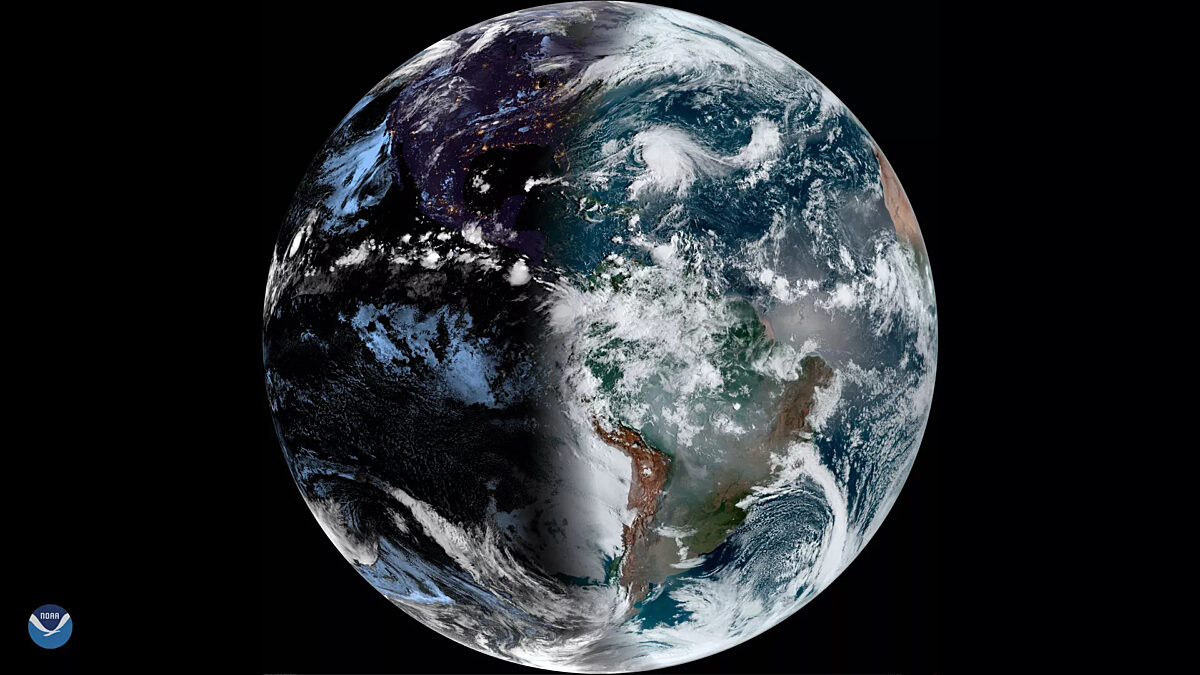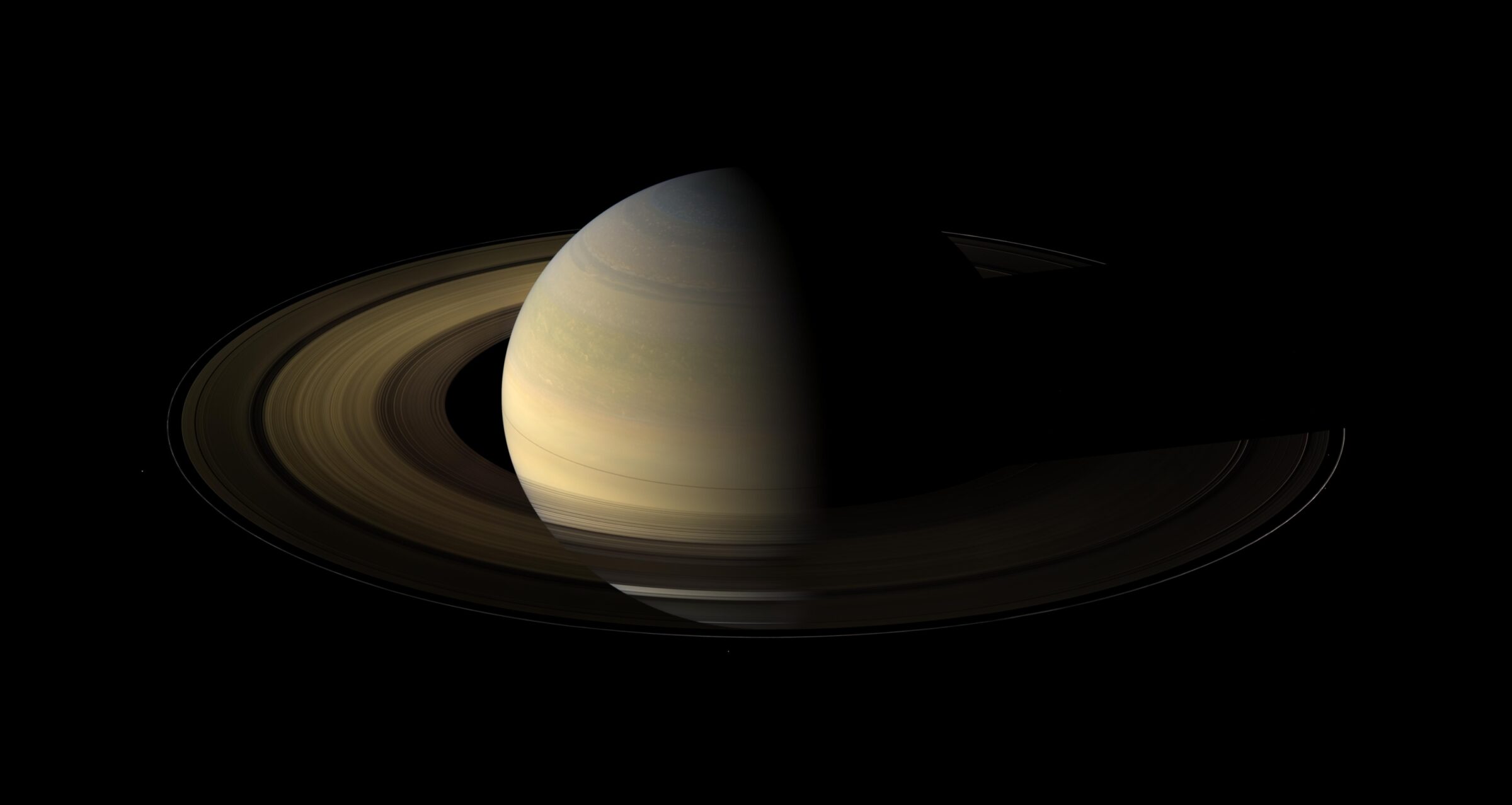The Downlink • Sep 22, 2023
Equinox and equilux
Space Snapshot

Here on Earth, today is the equinox. The Earth’s axial tilt creates the seasons, but twice a year its movement around the Sun aligns with its tilt so that the plane of Earth is neither tilted away from nor toward the Sun. On the equinox, the Sun appears directly above the Earth’s equator, and day and night are about the same length everywhere on the planet. Pictured: The U.S. National Oceanic and Atmospheric Administration’s GOES 16 satellite captured this image of the September 2022 equinox from orbit. Image credit: NOAA.
You love space, now take action
This weekly newsletter is your toolkit to learn more about space, share information with your friends and family, and take direct action to support exploration. Anyone can subscribe at planetary.org/connect to receive it as a weekly email.
Mission Briefings


The OSIRIS-REx sample return drop is happening this Sunday. The mission collected samples from asteroid Bennu (pictured) in 2020, and on Sept. 24, 2023 it will drop the sample collection capsule into Earth's atmosphere. The capsule will land via parachute in the Utah desert. Watch the live coverage on Sunday, starting at 10:00 a.m. EDT (14:00 UTC). Image credit: NASA/Goddard/University of Arizona/Edited by The Planetary Society.

Calling U.S. students grades 6-12! The 2024 National STEM Challenge is looking for your scientific projects, innovations, inventions, and research that aims to solve real-world problems under six themes, including aerospace. Top-scoring STEM champions will present their projects at the National STEM Festival in Washington, D.C., in April 2024.

And calling all eclipse chasers! NASA is asking citizen scientists who plan to watch the total solar eclipse in April next year to use the SunSketcher 2024 app to capture images of the Sun just before and after the solar eclipse. Those images will help studies of the Sun’s shape, including how much it deviates from being a perfect sphere.
From The Planetary Society


The Day of Action was a great success. More than 100 space enthusiasts from around the country traveled to Washington, D.C., on Sept. 18, meeting with their representatives in Congress to advocate for increased investments in NASA’s space science programs. Planetary Society CEO Bill Nye also met with Senate Majority Leader Chuck Schumer and other leaders in Congress to advance the Society’s core enterprises of planetary exploration, the search for life, and defense from asteroid impacts. Image credit: The Planetary Society.

It's almost eclipse season! We’ve got some great resources to help you prepare to enjoy this rare celestial phenomenon. Start with the guide to the October 2023 annular eclipse, which will also be visible as a partial eclipse over a very large area. And if you’re making plans to travel to the path of totality for the April 2024 total solar eclipse, we’ve got a handy guide to the practicalities of doing so.

Alone (for now), but far from lonely. Although humans have not yet found evidence of extraterrestrial life, the search has never lost hope. This is the theme of a new book from Planetary Society co-founder Louis Friedman, "Alone but Not Lonely: Exploring for Extraterrestrial Life." Lou joined this week’s Planetary Radio to discuss the book, which looks at the search for life, from habitable worlds to the technologies that might allow us to explore exoplanets without leaving our stellar backyard.

A space traveler needs to know what they’re in for. Best-selling science writer Mary Roach joined The Planetary Society’s members-only virtual book club meeting this month to talk about her book “Packing for Mars,” which explores the fascinating and surprising realities of what it takes to keep humans alive and well in space. If you missed it, you can watch the recording. Want to take part in the next book club meeting? Log into our online member community. If you aren't already a member, join today.
What's Up

After sunset you can spot yellowish Saturn rising in the east, crossing the sky throughout the night. Jupiter shines super bright, rising in the east a bit later than Saturn. In the predawn, find Venus shining very bright, low in the east, with Mercury far below it but as high as it’ll get for the next little while. Learn what else to look for in September’s night skies.
Wow of the Week

Other planets have tilted axes as well, including Saturn, seen here by the Cassini spacecraft during its equinox in 2009. When Saturn’s equator directly faces the Sun, its rings do too. This means they reflect very little sunlight, since they’re being illuminated from the side. In an image like this one, the light you see on the rings is mostly reflected off Saturn — also known as planetshine. Saturn reaches its equinox every 14.7 years on average, and its next one will take place on 6 May 2025. Image credit: NASA/JPL/Space Science Institute.
Send us your artwork!
We love to feature space artwork in the Downlink. If you create any kind of space-related art, we invite you to send it to us by replying to any Downlink email or writing to [email protected]. Please let us know in your email if you’re a Planetary Society member!


 Explore Worlds
Explore Worlds Find Life
Find Life Defend Earth
Defend Earth


